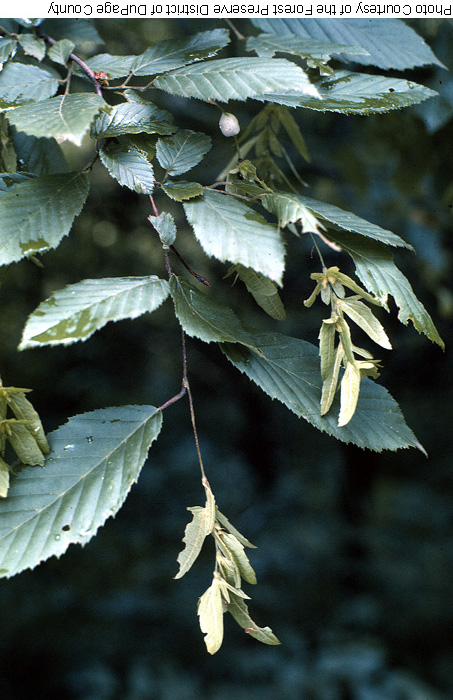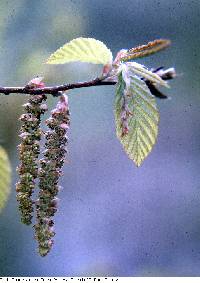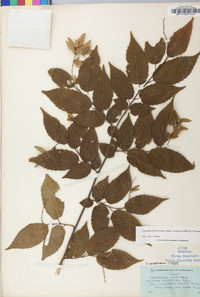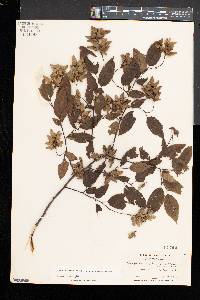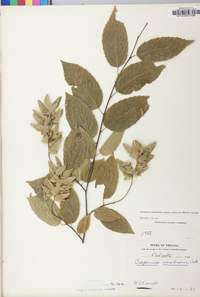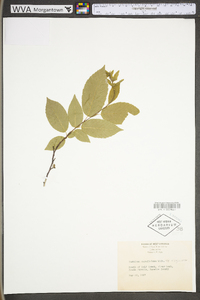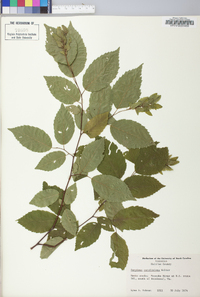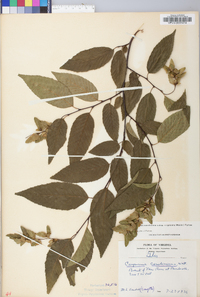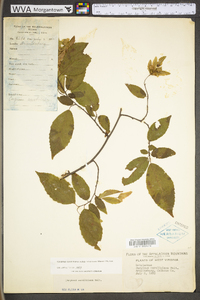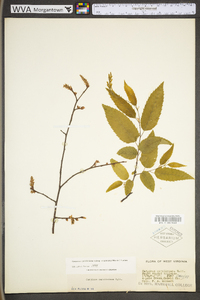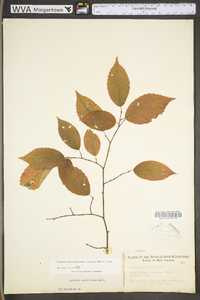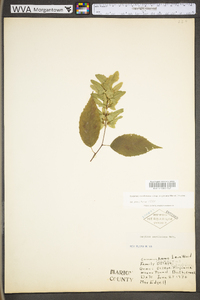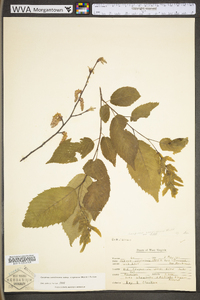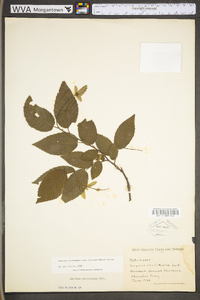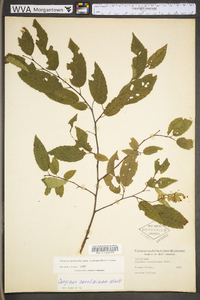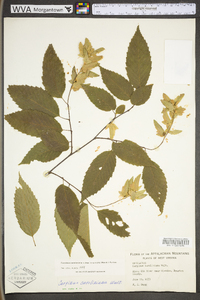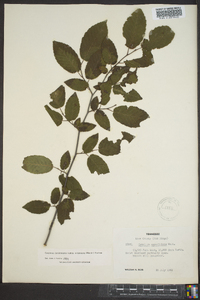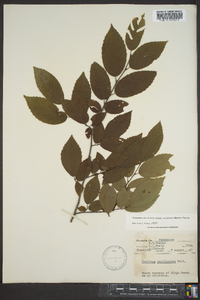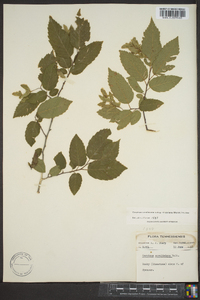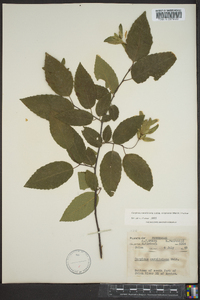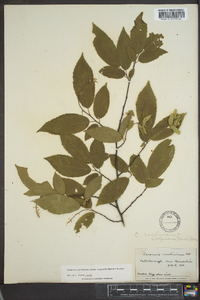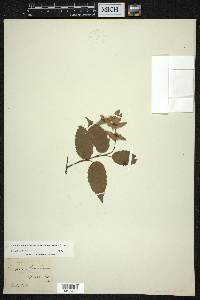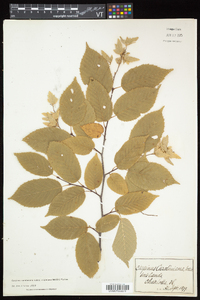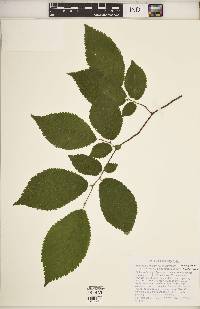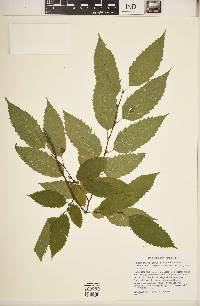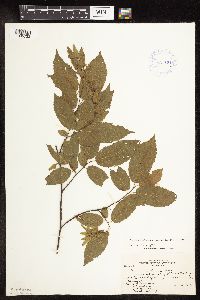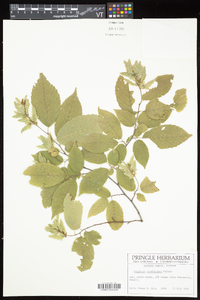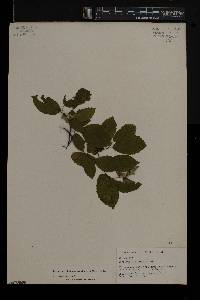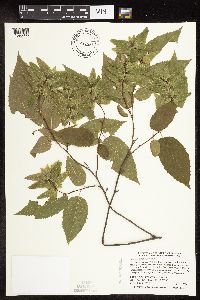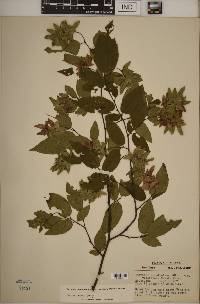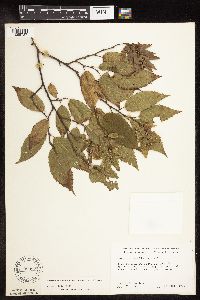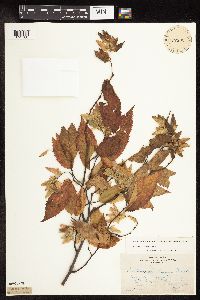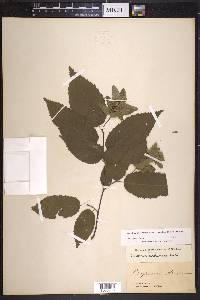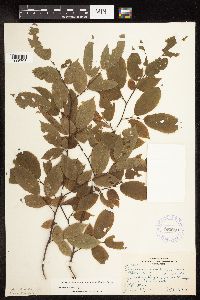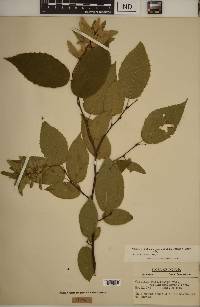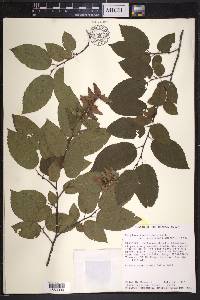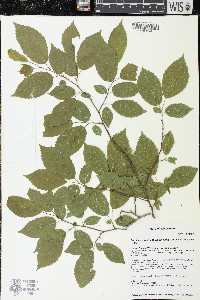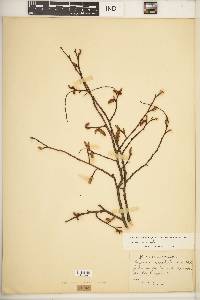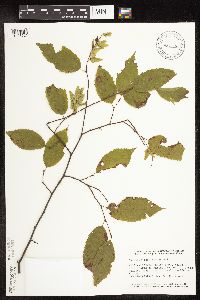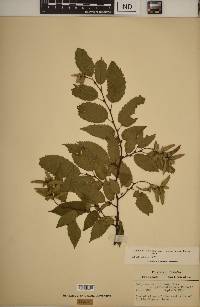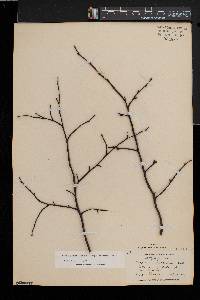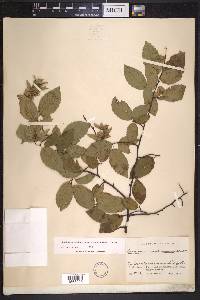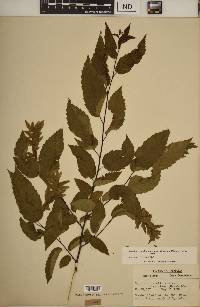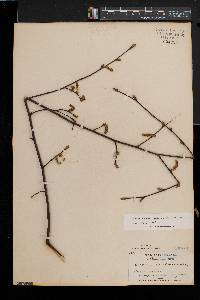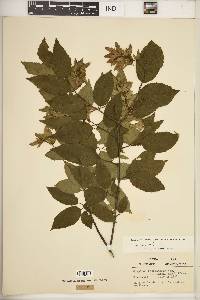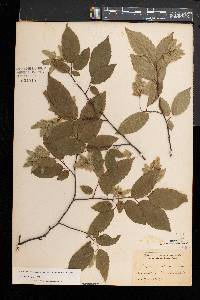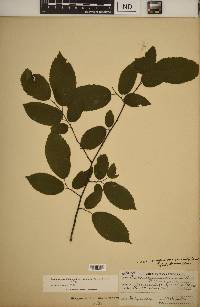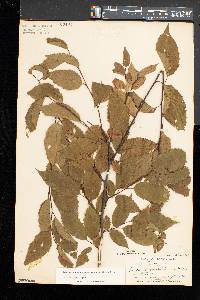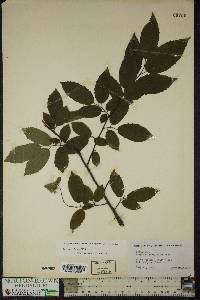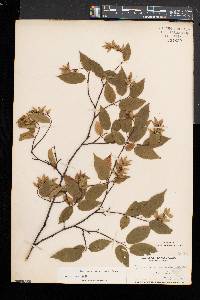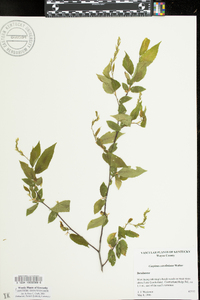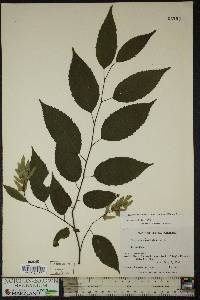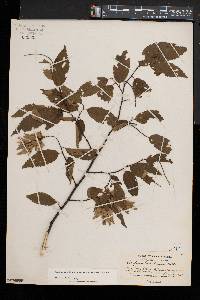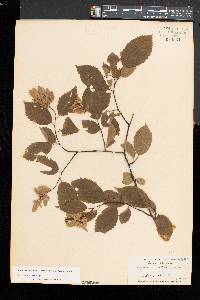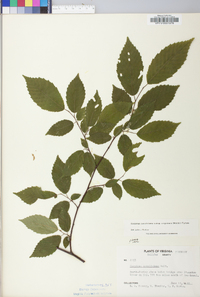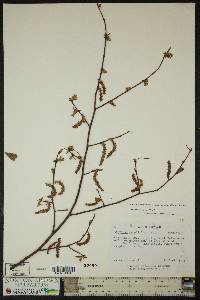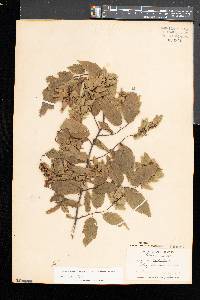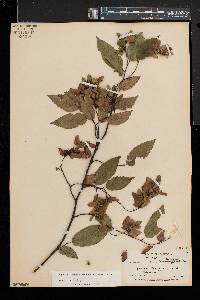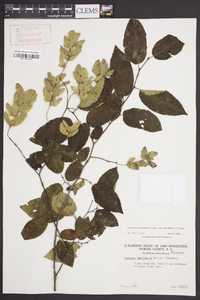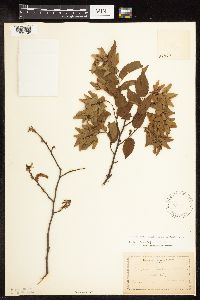Carpinus caroliniana subsp. virginiana
|
|
|
|
Family: Betulaceae
American Hornbeam, more...ironwood, musclewood, blue beech
|
Trees , to 12 m; trunks short, crooked, shallowly to deeply and often irregularly fluted, crowns broadly spreading. Bark bluish gray, smooth to somewhat roughened. Leaf blade ovate or elliptic to narrowly elliptic, (6--)8--12 × 3.5--6 cm, base narrowly rounded to cordate, margins coarsely and unevenly doubly serrate, teeth sharp and slender, secondary teeth almost as large as primary teeth, apex usually abruptly nearly caudate, but sometimes long, gradually tapered; surfaces abaxially usually moderately pubescent, especially on major veins, covered with numerous tiny, dark brown glands. Inflorescences: staminate inflorescences 2--6 cm; pistillate inflorescences 1--3 cm. Infructescences 4.5--12 cm; bracts 2.5--3.5 × 1.5--2.8 cm, lobes narrowly triangular, sharp-tipped. 2 n = 16. Flowering late spring. In understory stratum in rich deciduous forest along stream banks, on flood plains, and on moist hillsides; 0--300 m; Ont., Que.; Ala., Ark., Conn., Del., D.C., Ga., Ill., Ind., Iowa, Ky., Maine, Md., Mass., Mich., Minn., Miss., Mo., N.H., N.J., N.Y., N.C., Ohio, Okla., Pa., R.I., S.C., Tenn., Vt., Va., W.Va., Wis. Carpinus caroliniana subsp. virginiana is the familiar hornbeam of the Appalachians and interior forested northeastern North America. The leaves are distinctive in that they bear scattered dark glands on the abaxial surface. This subspecies hybridizes and intergrades with subsp. caroliniana where their ranges overlap in a broad band running from the Carolinas south to northern Georgia and westward to Missouri, Arkansas, and southeastern Oklahoma (J. J. Furlow 1987).
Tree to 12 m tall Leaves: alternate, short-stalked, bluish green above, paler and hairy with tiny dark brown glands beneath, 8 - 12 cm long, 3.5 - 6 cm wide, elliptic to egg-shaped with a narrowly rounded to heart-shaped base and an almost tail-like or long-tapered tip, toothed with largest teeth at ends of straight and unbranched veins. Leaves turn red or orange in fall. Flowers: either male or female, found on the same tree (monoecious), borne in green catkins. Male catkins are 2 - 6 cm long with boat-shaped scales and develop in fall but remain enclosed in a bud until spring. Female catkins 1 - 3 cm long with hairy scales. Fruit: a tiny nut attached at the base of a bract, borne in loose terminal clusters 4.5 - 12 cm long and persisting late into fall or winter. The leaflike bract is 2 - 3.5 cm long and three-lobed with the middle lobe longest. Nut brown, egg-shaped, and ribbed. Bark: deep bluish gray, thin, smooth with muscle-like ridges. Twigs: slender, pale green and hairy, changing to shiny dark red, and then gray. Terminal buds: absent. Leaf scars: have three bundle scars. Form: spreading with a short, crooked trunk. End and lateral buds: somewhat angled around the stem, 3 - 4 mm long, narrow egg-shaped, scales brown with a white margin. Similar species: Carpinus caroliniana is divided into two subspecies, with Carpinus caroliniana ssp. virginiana found in the Chicago Region. Carpinus caroliniana ssp. caroliniana, the more southern species, lacks glands and usually has smaller leaves with fewer teeth along the margin. Flowering: April to mid May Habitat and ecology: Common in understory of mesic woods, often in poorly drained soils. Occurence in the Chicago region: native Etymology: Carpinus is the Latin name for hornbeam. Caroliniana means "from the Carolinas." Virginiana means "from Virginia." Author: The Morton Arboretum From Flora of Indiana (1940) by Charles C. Deam Often called water beech. Frequent to common throughout the state in moist woodland. It prefers a moist, rich soil but has a range of habitats in the state from the tamarack bog to the dry, black and white oak slope. It is tolerant of shade. Having no commercial value, it is regarded by foresters as a weed tree. ...... Indiana Coefficient of Conservatism: C = 5 Wetland Indicator Status: FAC |

